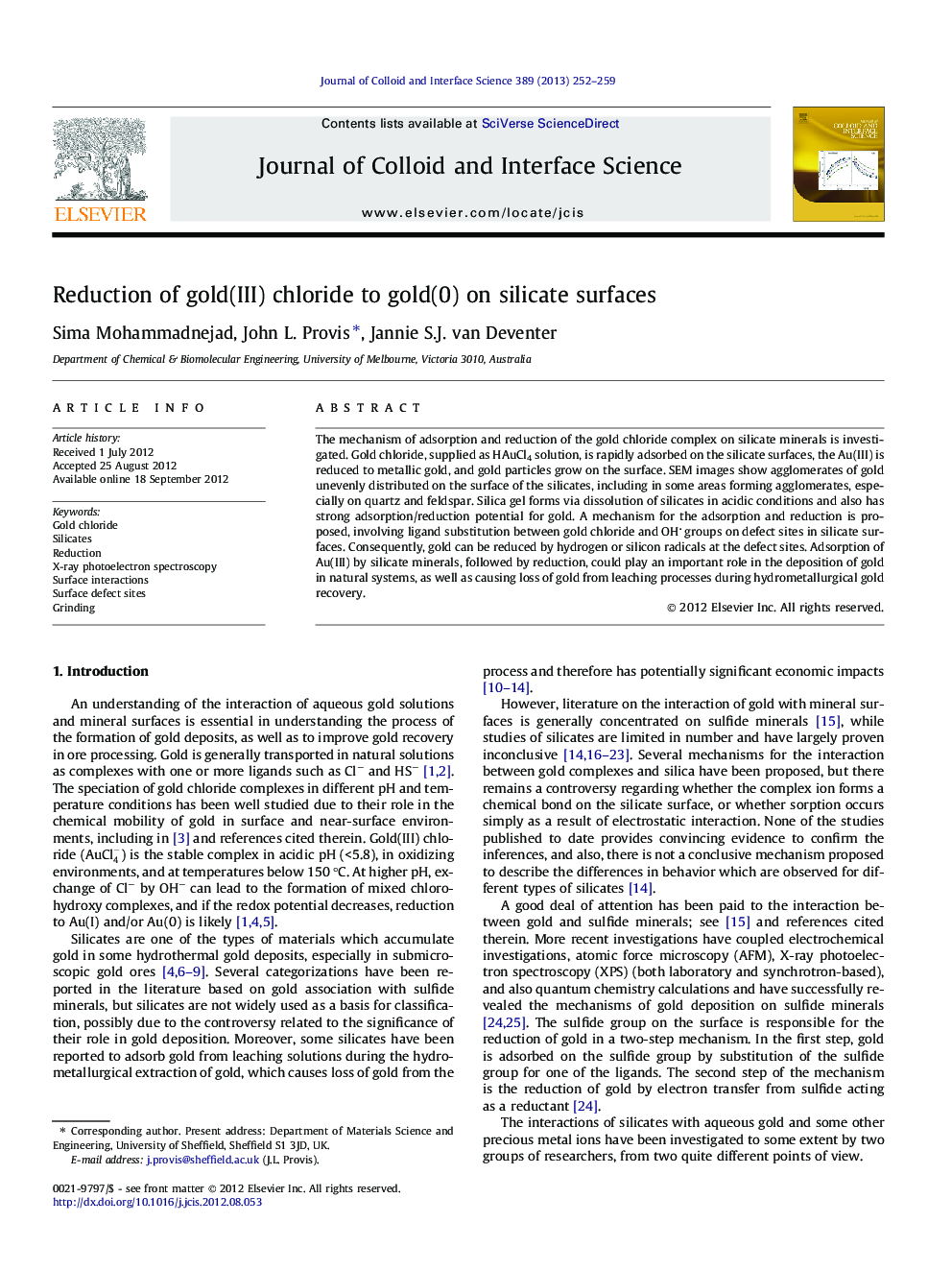| کد مقاله | کد نشریه | سال انتشار | مقاله انگلیسی | نسخه تمام متن |
|---|---|---|---|---|
| 607951 | 880564 | 2013 | 8 صفحه PDF | دانلود رایگان |

The mechanism of adsorption and reduction of the gold chloride complex on silicate minerals is investigated. Gold chloride, supplied as HAuCl4 solution, is rapidly adsorbed on the silicate surfaces, the Au(III) is reduced to metallic gold, and gold particles grow on the surface. SEM images show agglomerates of gold unevenly distributed on the surface of the silicates, including in some areas forming agglomerates, especially on quartz and feldspar. Silica gel forms via dissolution of silicates in acidic conditions and also has strong adsorption/reduction potential for gold. A mechanism for the adsorption and reduction is proposed, involving ligand substitution between gold chloride and OH groups on defect sites in silicate surfaces. Consequently, gold can be reduced by hydrogen or silicon radicals at the defect sites. Adsorption of Au(III) by silicate minerals, followed by reduction, could play an important role in the deposition of gold in natural systems, as well as causing loss of gold from leaching processes during hydrometallurgical gold recovery.
Figure optionsDownload high-quality image (77 K)Download as PowerPoint slideHighlights
► Gold chloride is reduced to metallic gold on defect sites of silicate surfaces.
► Reprecipitated silicate gels formed during acidic leaching of quartz have high gold uptake.
► These processes may be important in ore geochemistry and in hydrometallurgy.
Journal: Journal of Colloid and Interface Science - Volume 389, Issue 1, 1 January 2013, Pages 252–259